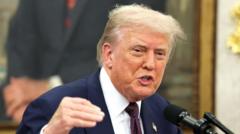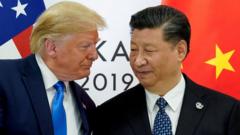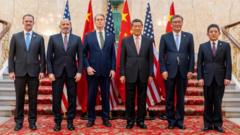Malaysia has set its sights on becoming a key player in the global semiconductor industry, particularly in the high-tech chip sector essential for artificial intelligence. Over the past five decades, American tech firms have established manufacturing facilities in Penang, creating numerous jobs and turning the region into a critical hub for semiconductor exports to the United States. However, the ambitions of this Southeast Asian nation are now complicated by the shifting landscape of U.S. trade policy under President Trump.
In 2025, with an eye on increasing competition with China and enhancing domestic technology capabilities, Prime Minister Anwar Ibrahim unveiled an extensive plan to invest billions over the next decade to transition Malaysia from just assembling semiconductors to engaging in advanced chip design and production, much like Taiwan. This bold move was initially seen as a response to U.S. interests in reducing reliance on Chinese manufacturing.
Yet, the unpredictability of Trump's tariff policy poses a serious threat to these plans. Recently, the Trump administration placed a 24 percent tariff on Malaysian exports, a decision that has been temporarily suspended while both countries negotiate the terms of trade. Currently, Malaysian products are subject to a baseline tariff of 10 percent, but there are talks about implementing a blanket 25 percent tariff on all semiconductor imports, citing national security concerns.
Julia Goh, a senior economist with UOB in Singapore, highlighted the implications of this aggressive trade stance, suggesting it could hinder Malaysia's aspirations and push the U.S. towards reshoring semiconductor production back to American soil. The evolving situation continues to create uncertainty for Malaysian manufacturers who are strategizing their next steps in the global tech landscape.






















